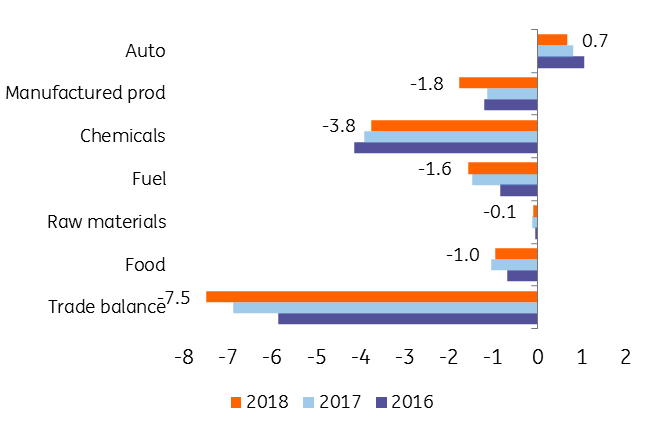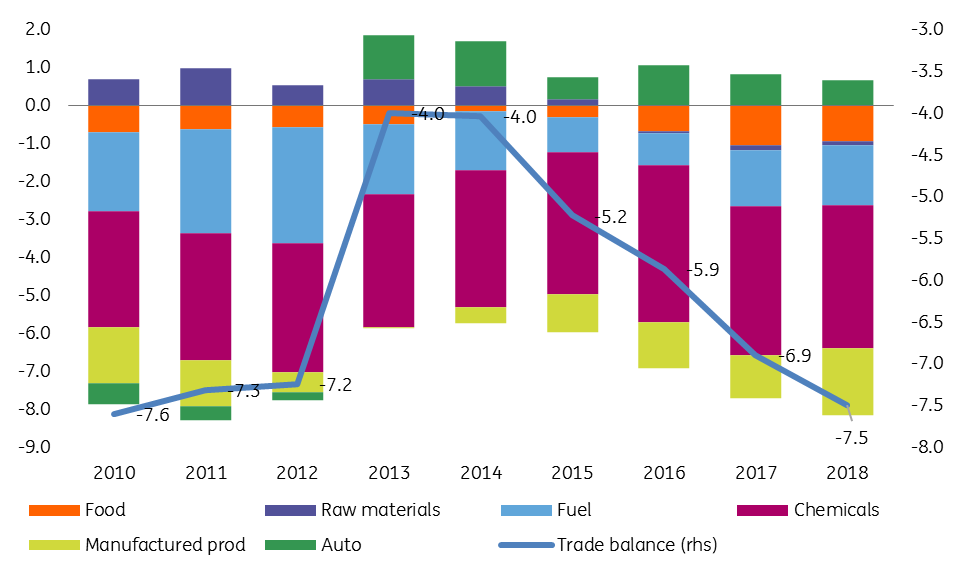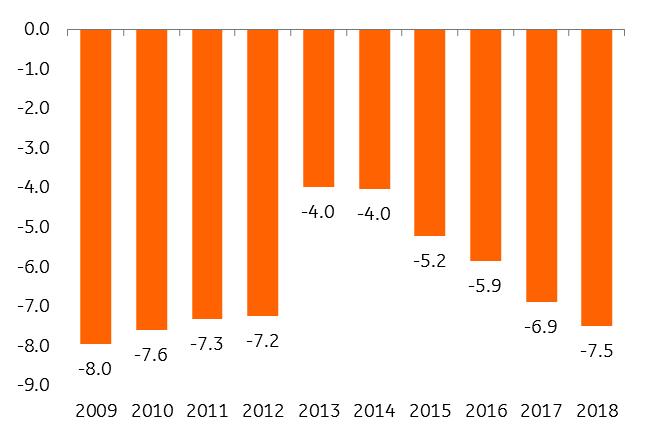Romania’s trade balance widening just doesn’t seem to stop
In 2018 Romania's trade deficit widened 16.8% compared to 2017, and ended the year at -7.5% of GDP, which builds the case for further FX corrections
In December 2018, Romania’s imports accelerated – again – faster than exports. Among the main trends in 2018, we notice food items balance has stopped deteriorating. This could be partly due to a slowdown in consumption growth, but also some structural improvements in the sector. Also, the big picture shows that the surplus of the auto sector – the only component which posted a positive trade balance for the year is on a downward trend for the third consecutive year as a share of GDP.
Yearly trade balance as percentage of GDP

The -7.5% trade deficit for 2018 is the highest since the last recession ended in 2010-2011 and so the main reason behind the balance of payments deterioration. In terms of total contributions to the trade deficit, the chemical sector contributed -3.8ppt to the total -7.5% deficit, followed by manufacturing (other than autos) with -1.8ppt and fuel -1.6ppt.

The continuous deterioration of the external balance has been noted by the National Bank of Romania as a source of growing risk. In its February 2019 inflation report, the central bank expects the current account deterioration to continue in 2019, while the sustainability of its financing structure to decrease. This will – in our view – continue to add to the pressures on FX.
Trade balance as % of GDP
